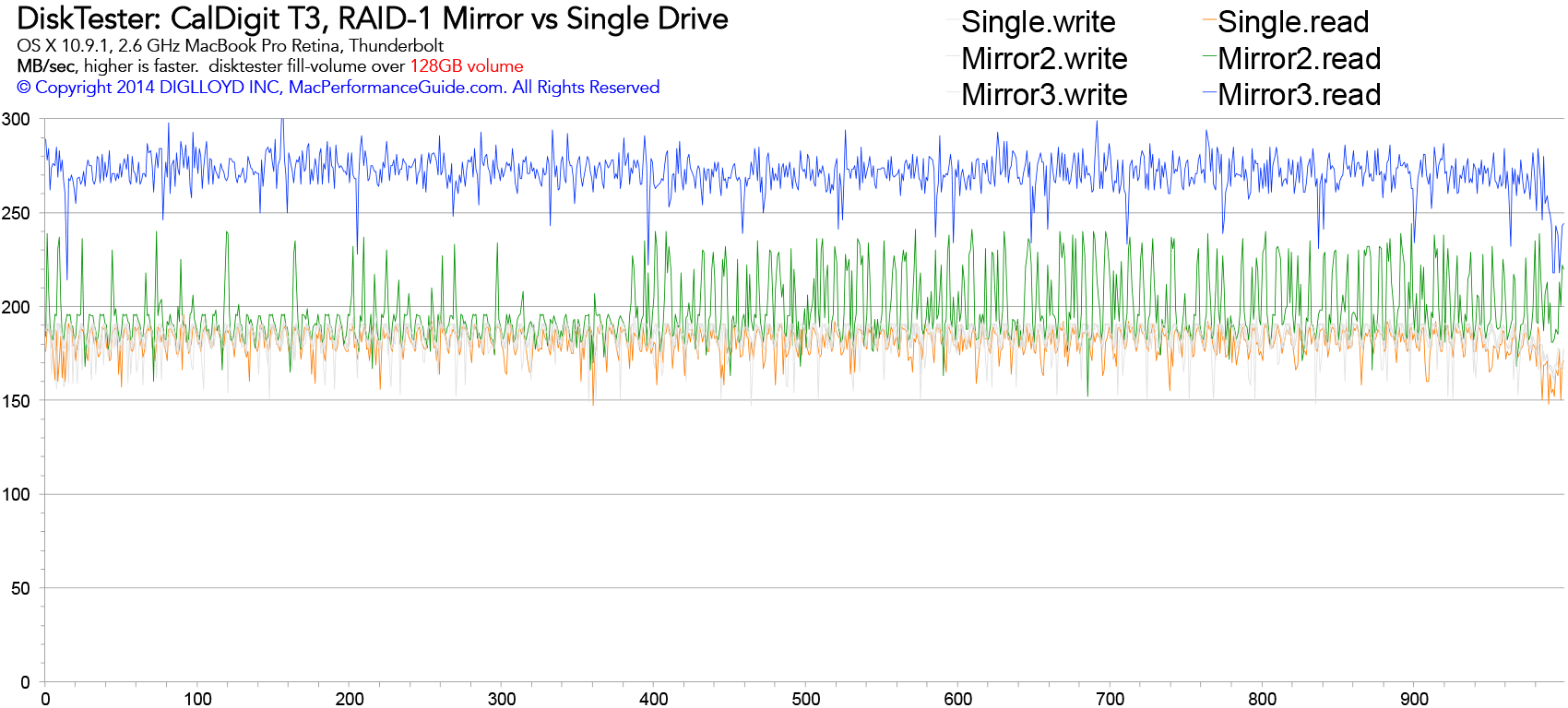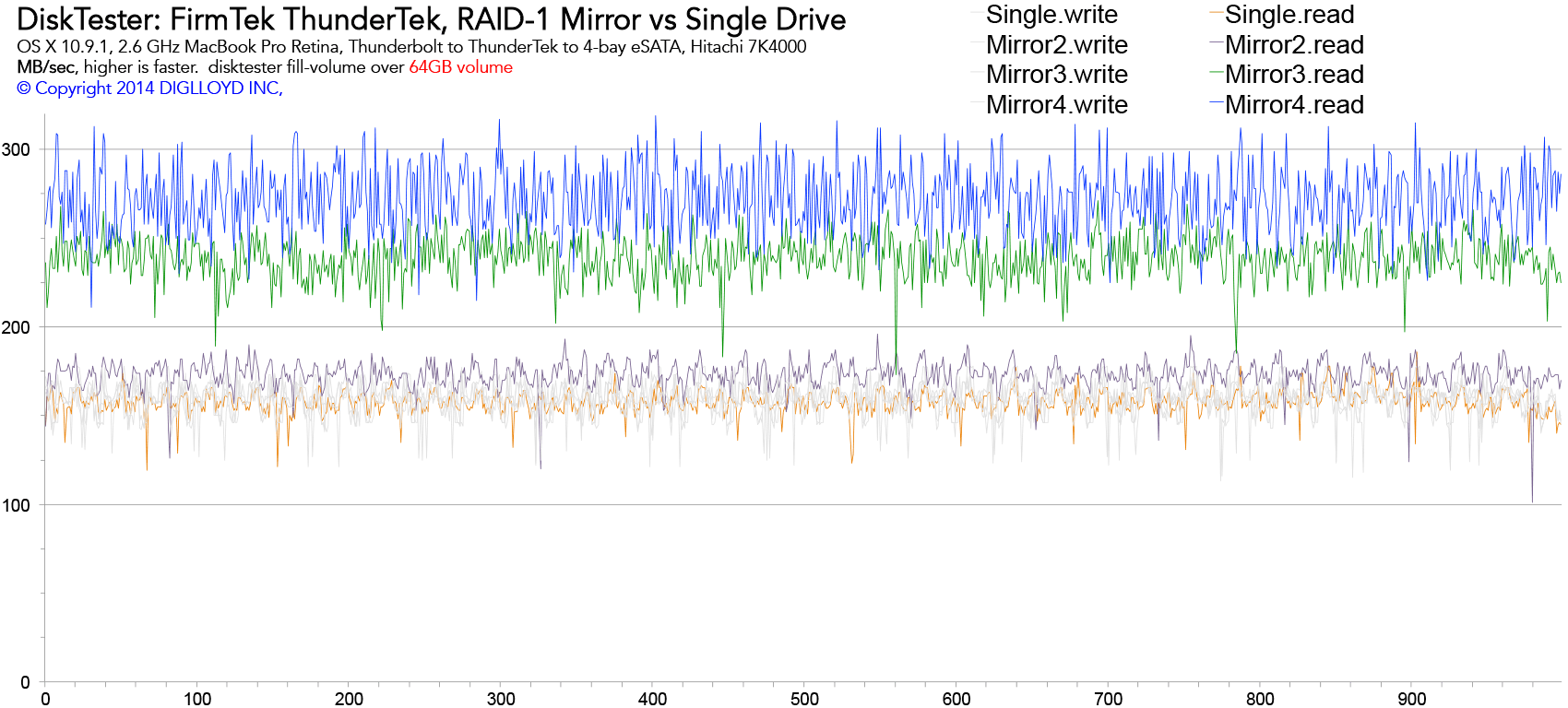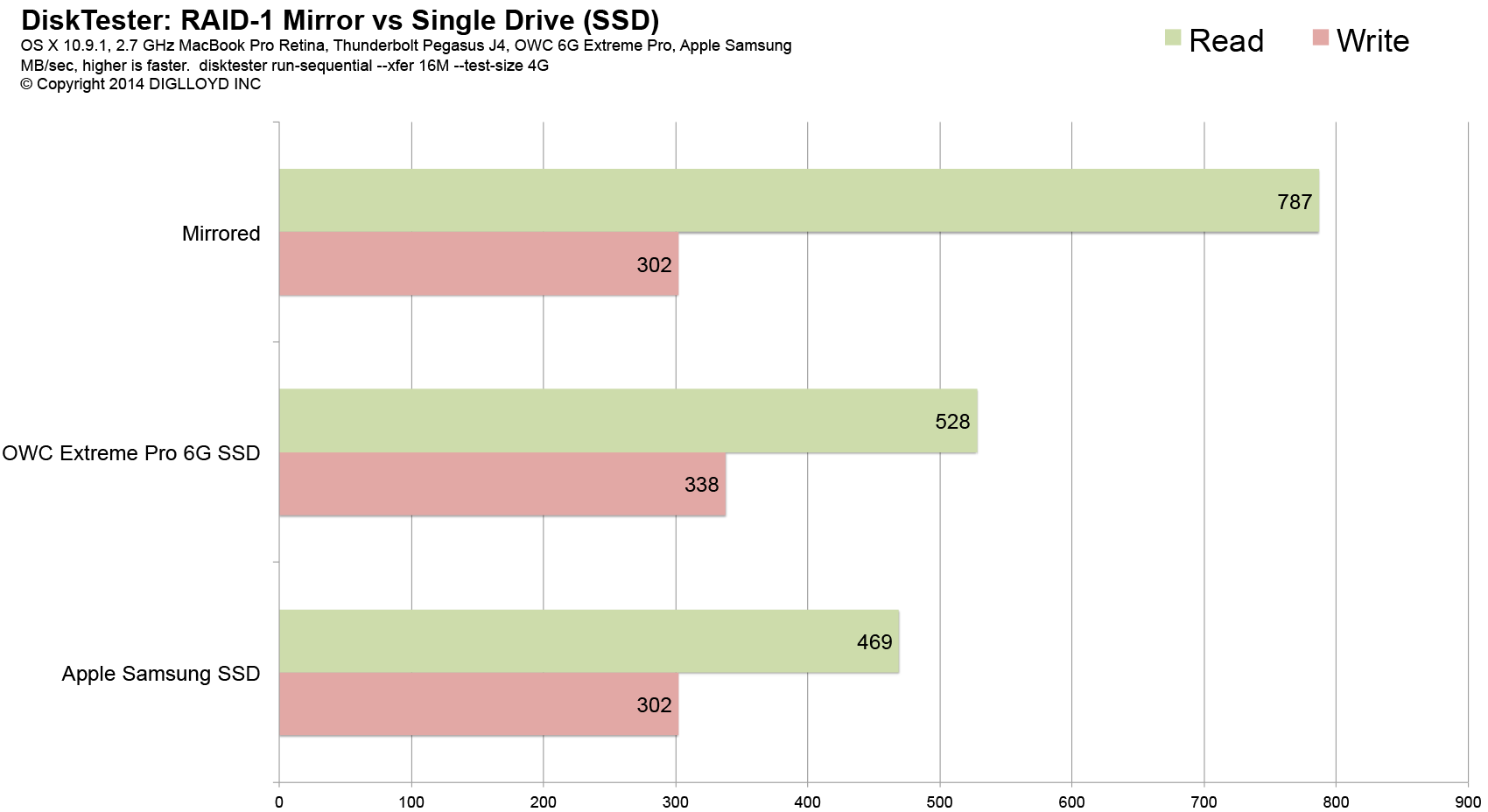
$220 SAVE $130 = 37.0% Western Digital 16.0TB Western Digital Ultrastar DC HC550 3.5-in… in Storage: Hard Drives
|

|

|

|

|

|

|

|

|

|
Speed: RAID 1 Mirroring
Related: fault tolerance, hard drive, RAID, RAID-1, SSD, storage, Thunderbolt, Toshiba, weather events
For reads with a RAID-1 mirror there is potential to distribute reads across more than one drive, since all drives contain the same data, thus enhancing read performance. However, read speed is never as as good as RAID-0 striping because the reads are offset (staggered) among the drive members of the mirror, but an optimized controller or driver can extract some benefits.
Typical RAID-1 mirror 2-drive setups with hard drives show little or no benefit from reading from multiple drives, whether the mirror is hardware of software based. A three drive setup offers more potential for improvement.
With SSDs (flash drives), the potential for speeds is far higher, since SSDs do not have the latency issues of hard drives.
Reads matter more than writes for most uses
Raw image files, video, music and similar all get written once and rarely if ever change. Since most user activity is read-based (not writes), an increase in read speed is a meaningful advantage of using a three-drive RAID-1 mirror.
Moreover, write-speed optimization using hard drives is often a losing game anyway: far better to use a fast SSD when write performance is a significant issue.
As a bonus, using three drives in a mirror yields substantially more fault tolerance as well (versus two drives).
Test results
Tested with three fast Toshiba 7200 rpm DT01ACAxx series drives using SoftRAID 5 with “Use all disks for mirror reads” enabled.
This graph using the CalDigit T3 , which has ample bandwidth for this test.
MB/sec:
Single drive: 184 write / 181 read
2-drive mirror: 184 write / 198 read
3-drive mirror: 184 write / 271 read
A 2-drive mirror offers brief spikes of better performance than a single drive averaging 9% faster than a single drive—not nothing but not much either.
A 3-drive mirror delivers about 50% higher read speed than that of a single drive.
Write speeds are in gray and are the same it is a single drive or a 2-drive or 3-drive mirror—this is as expected.

An example with slower drives
Drive speed and latency can limit the benefits. In the test below, the slower 4TB Hitachi 7K4000 drives were used. Four drives are a little faster than three as shown, but no faster than a 3-drive mirror of the Toshiba drives in the graph shown above.
MB/sec:
Single drive: 162 write / 158 read
2-drive mirror: 159 write / 173 read
3-drive mirror: 158 write / 239 read
4-drive mirror: 158 write / 271 read

An example with SSD
Solids state (flash) drives don’t have the latency issues of hard drives.
Here, with two mistmatched SSDs, the mirrored read speed has hit 787 MB/sec, which exceeds what Promise Technology states is the speed for the Pegasus J4 (“Delivers over 750MB/s with SSDs”). A 4-drive SSD stripe maxes out at less than 900MB/sec, so seeing 787MB/sec with two mismatched SSDs is rather good.

Seagate 22TB IronWolf Pro 7200 rpm SATA III 3.5" Internal NAS HDD (CMR)
SAVE $100

 diglloydTools™
diglloydTools™

